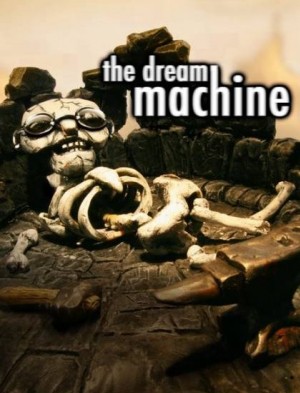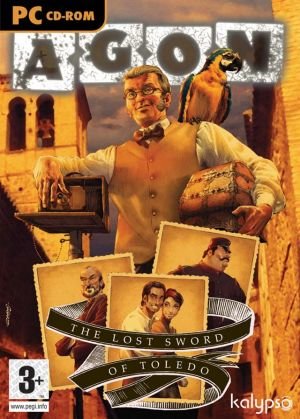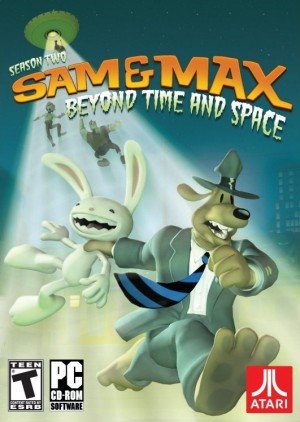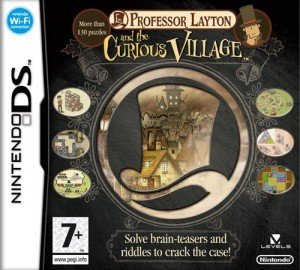Review for The Dream Machine: Chapter 3

It’s been a while since the double-episode browser-based debut of The Dream Machine, but the indie cardboard-and-claymation series continues to demonstrate remarkable quality in Chapter 3, which maintains the charming aesthetic style, surreal storyline and engaging characters of its predecessors. Paradoxically, however, this middle episode in the planned five-part series both requires intimate knowledge of the premise to date and yet stands almost completely alone, without any overt connection to the previous episodes (or presumably, those to follow).
The start of Chapter 3 is sorely lacking a flashback of past events, and given the long wait between installments, this really is a necessity (particularly with a memory as poor as mine). With no preface at all for context, Victor Neff finds himself within the dream of his wife, Alicia, for reasons explained in the dramatic second chapter that I won’t spoil here. The entirety of this chapter is focused solely on Alicia’s dream, introducing a whole “new” cast of characters and original surroundings to explore.
Alicia’s dream is set on a cruise ship, though you’re not there to relax but to work as the latest recruit. Being a dream, however, not everything is sensible, and you quickly discover that the entire crew is made up of identical versions of yourself. Unfortunately, as the newest helper of lowly station, assigned to assist others in pleasing the ship’s secluded Captain (who just so happens to be Alicia), you’re limited to a small portion of the ship, stretching across only eight different screens, several of which are quite similar. Early on you’re informed that by increasing your rank you’ll gain access to more of the ship, which offers the promise of a larger game beyond the small sections initially accessible, but that never comes to pass, with just two new rooms to explore later on, though one of them is well worth the wait.
As before, Chapter 3 is run entirely in your browser, requiring no installation of any kind. Otherwise, the game plays out like your typical point-and-click adventure, mixing character dialogue, inventory management, exploration and various puzzles. There are interactive items littered throughout each environment, either to be manipulated or simply for Victor to observe, though most non-essential items add little of interesting commentary. Initially starting slowly with very basic, straightforward puzzles, such as collecting glasses around the ship for the bartender or placing poison in three scattered rat holes, the story becomes far more engaging when you learn that a crew member has disappeared under mysterious circumstances. After proving your worth by performing enough menial tasks, you’re finally given a worthy assignment, placed in charge of the missing person’s investigation.
As you begin to question the crew and collect the scarce evidence available, the puzzles become cleverly interwoven, typically requiring you to solve a portion of one task before being able to continue on another. One particularly tricky example requires obtaining a substitute ingredient to make a cocktail for the bartender, which is only accessible after gaining favour with another crew member first. It’s this constant back and forth between various crew members and different tasks that’ll keep you fully engaged, spotting small potential solutions in even minor hints, including detailed descriptions of some items in inventory. There’s also a good mix of logic puzzles, from a simple circuit breaker in which you need to reroute electricity with only four switches to more complex puzzles like a torn paper jigsaw puzzle with an ingenious and subtle twist.
Surprisingly, even though you’re only ever technically conversing with yourself, you’ll encounter some diverse and varied personalities. Whilst not as charming as the banter between Alicia and Victor in past episodes, the multiple-choice conversations here are witty and well fleshed-out. The bartender desperately longs for recognition from the Captain, while the off-duty busboy has been labelled crazy for questioning official reports of previous disappearances, while the beleaguered kitchen cook expresses his dismay at your interruptions over the telecom. Each of the main characters is intriguing and nicely developed as more of the story is unveiled, though their existence – and the experience itself – is short-lived. While you’ll have reason to suspect their motives at times, their relevance is ultimately only in helping you reach Alicia so long as you’re within her dream.
Whilst there is plenty of cryptic and eerie mystery throughout the dream setting itself, with a steady run of conspiracy theories and surprise twists, it’s the overarching story behind it that remains the carrot on the stick as you progress. It’s a shame then, that unlike Chapter 2, this installment reveals very little more upon its conclusion, instead merely offering a tease of new possibilities and answers still to come. Of course, the strategy worked, as it did a stellar job of tantalising me into wanting the follow-up episode as soon as possible.
The most unique aspect of The Dream Machine is its art style, which remains as charming and brilliant here as always, if a little sparse in locations and visual variety this time around. Animation is minimal, which is understandable given the medium, but the hand-crafted detail is impressive, from the popsicle stick lounge chairs to discoloured lights to stained walls (even in a dream, the crew doesn’t enjoy luxury accommodations, apparently).
One of my biggest gripes is once again the lack of voice acting to go along with the text dialogue. And whilst the subtle, eerie background music is fantastic, it’s also relatively sparse. Even the sound effects are few and far between. Most of the time there is only silence, which forced me to leave taps running in each room just to add some aural diversity. Thankfully, it seems that sinks in dreams never overflow, or I’d have sunk the ship quite early on.
A commendable aspect of this series, though it's yet to affect this episode specifically, is the developers making constant updates to the games on the go, further expanding possible interactions or making small tweaks to the puzzles. That’s the beauty of being played entirely online, giving you even more reason to take a look if you’re arriving late to the series.
Even though the third chapter of The Dream Machine feels somewhat like a sidestep from the first two, being so detached from the outside world and overarching story, it’s still very much an engaging and entertaining experience throughout the few hours that it lasts. The high quality shines through, from the amusing writing and intriguing premise to the challenging, multi-step puzzles. There’s not nearly as much diversity this time around, and a little more puzzle feedback would be appreciated at times, but the charm continues to ooze even through its increasingly dark storyline. For less than €5 per episode or a discounted price for the entire series at the official website (including the first episode completely free as a demo), there is absolutely no reason not to dive in and see first-hand for yourself.



























